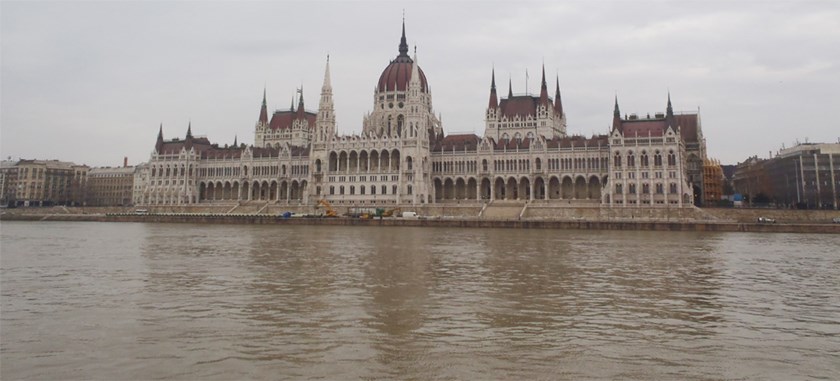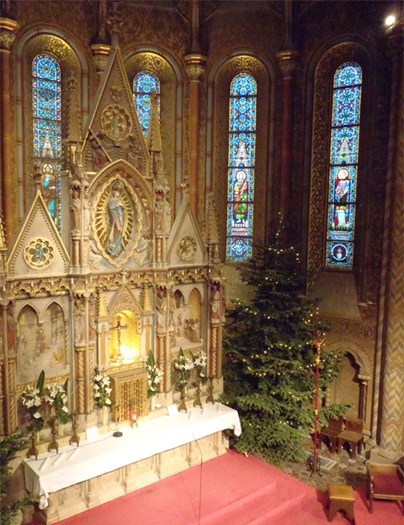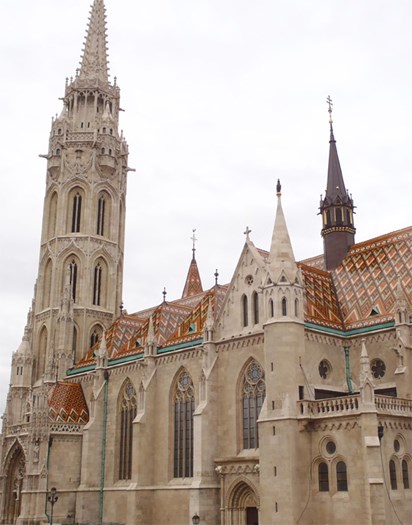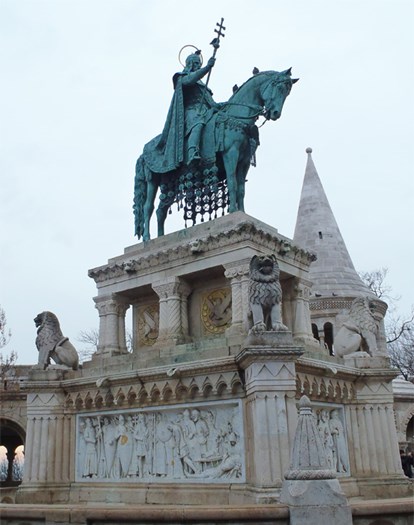BUDAPEST, HUNGARY- It’s a bit late when I arrive in Hungary’s capital, around 8 p.m. But I’m anxious to begin exploring this city divided by the River Danube, so I drop my bags off at the hotel, grab my coat and head out on a moonless night. Big mistake!
The prospect of seeing Budapest was the most exciting part when I started planning this getaway, which also included stops in Vienna and Prague.
Lovely Vienna, which I’ve visited before, and romantic Prague, which I knew only from novels and movies, easily live up to my expectations. But as soon as I step out of the hotel to begin my eagerly anticipated exploration of Budapest, I feel the wind of excitement go out of my sails.
The streets are almost deserted; the few people I see hang their heads as they pass and avoid eye contact. Unlike the fairy-tale buildings in Vienna and Prague, the once-regal structures in this ancient city of the Austro-Hungarian Empire are decaying as Hungary’s recent economic woes have delayed much-needed repairs. The impression is of a sad city, miserable and colourless. My heart sinks as I pass rows of boarded-up buildings and empty restaurants. But the sadness quickly turns to alarm as I round a corner and hear footsteps in the dark. I see two young men looking menacingly at me. I try to stay calm and look around for somewhere with lights. I make for a bright intersection, with the men following closely.

Above: The grand architecture of Budapest showcases its historic importance.
I feel like I’m in a Cold War spy thriller. I see the neon sign of my hotel and dash for the entrance. Safely inside, I look back at the door and see one of the men outside, lighting a cigarette and glaring angrily at me.
In spite of that harrowing first impression, I want to give Budapest another chance, so I set off again — this time in the cold light of day and in the safety of a tour group — to seek the treasures that drew me here in the first place.
It turns out that the treasures are many. Fisherman’s Bastion is a neo-Gothic masterpiece that dominates Castle Hill on the Buda side of the Danube (Hungary’s capital is a union of two ancient cities, Buda and Pest, on opposite banks of the river). The magnificent terrace, built early in the 20th century and restored after the ravages of World War II, offers a spectacular panorama of the Danube, Margaret Island in the centre of the river, Pest and Gellert Hill.
The Bastion’s seven towers represent the Magyar tribe that settled in the Carpathian Basin in the 9th century and gets its name from the medieval guild fishermen whose responsibility it was to defend this part of the city wall.
A bronze statue celebrates the rule of Stephen I, who gallantly sits atop his horse, looking toward Matthias Church. The stately landmark was originally completed in 1015 in a Romanesque style; the current buildings date from the 14th century and were constructed in the Gothic style. The gorgeous structure has a regal bearing, and that’s appropriate since it was used for the coronation of Hungary’s monarchs.



Above: Great churches and grand monuments dominate the city.
I’m beginning to like Budapest.
As we leave the impressive terrace, our guide Virág tells me that most people would like to live on the the Buda side of the Danube, but the housing prices are “ridiculously expensive.”
Later, we tour St. Stephen’s Basilica, Heroes Square, dedicated to the memory of those who fought for Hungary’s freedom, and the shopping areas of Vaci Street and Central Market Hall before we board a boat and float down the Danube.
Over coffee, Virág tells us that Hungary’s economic conditions, like much of Europe, remain troubling, with the average salary being only about 700 euros a month ($1,100 Cdn), but we both break into laughter when she loudly proclaims: “It’s all the politicians fault!”
The traumatic introduction to Budapest created a dark image of a city that I had imagined would be one of Europe’s most colourful. But while looking back over my photos, a strange feeling came over me. I found myself missing the fabulous Hungarian espresso, the historic buildings (even if they’re a bit run-down), the wonderful food and the people, like Virág, who was so proud to show her city to visitors.
I miss it all … except for those two guys standing in the dark.